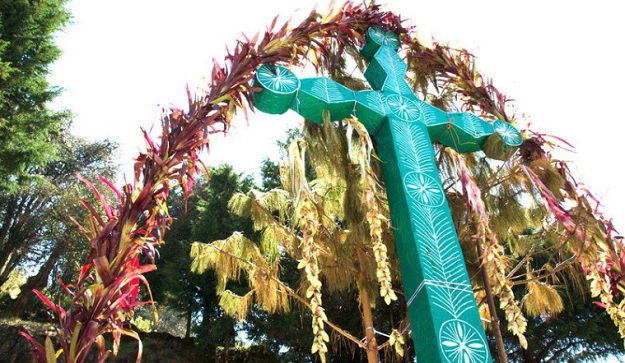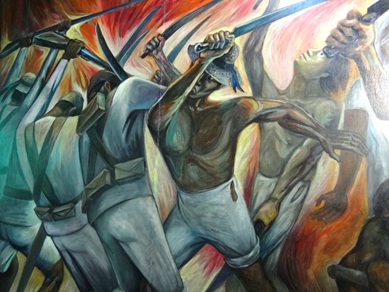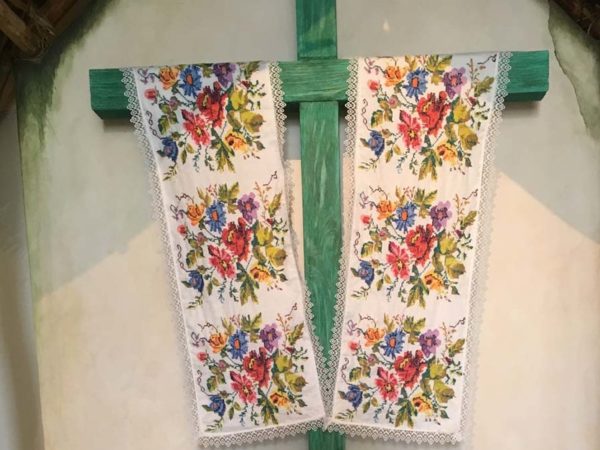Anyone who has made a road trip along the Yucatan Peninsula and in general of the entire Maya region in southeast Mexico, surely will have noticed that in the gardens and orchards of many houses there is always at least one green cross, sometimes these crosses are “dressed “with a “hipil” (or huipil).
For those who do not know much about Maya culture, it will not look like anything more than some kind of ornament or something related to the patron saint of the region. However, those who are familiar with the history of the Yucatán, know that this type of cross is a symbol of rebellion and identity for many people across the Peninsula.
Between 1847 and 1901 during the so-called Caste War, this type of cross was used as a kind of oracle or banner by the indigenous groups that worked in the henequen haciendas, who were fed up with the bad treatment that was imposed on them by their patrons, whom in fact they called “masters” (as if they were slaves).
The hacienda owners not only forced them to work long hours, but they also used to impose their ideological and religious beliefs on these Maya workers; and due to this constant mistreatment, the indigenous people decided to upraise.
A symbol of resistance
When the first Spanish explorers arrived in the lands inhabited by the Maya, they found that they already showed an incredible attachment to the cross; however, what they believed to be a kind of proto-Christianity was rather just a part of a cult that has to do with the creation of the Universe, according to the Mayan cosmogony.
What the conquerors believed was somehow a manifestation of Christianism in the New World, was nothing more than a representation of the Ceiba tree, which was considered the axis and center of the Universe by the ancient Maya.
The Franciscan monks who came to the peninsula around the year 1546 were well aware of the cult to the Ceiba tree in other communities of Mesoamerica; and that’s how they saw this as a perfect tool for the so-called “evangelization”, that was rather an ideological and religious conquest.
If one pays attention when entering any church of colonial times -especially those that were built as centers of evangelization-, none has an atrial cross in which the image of the crucified Jesus is portrayed. This has to do directly with the intention of not confusing the natives who, when seeing a man dying on the cross, would possibly associate this image with the human sacrifices they used to carry out, believing that this was a normal practice for other religions throughout the world.
«The only atrial cross in Yucatan, that represents a crucified Christ, is in the 16th century church of Maní. In Cozumel there was a huge one, as this island was a major Maya pilgrimage site from pre-Hispanic times».
– María del Carmen Valverde, PhD in Mesoamerican Studies at UNAM
Many were the Maya who were convinced by the Spaniards that praying to Christ was practically the same thing as raising their prayers to the Ceiba tree. However, there were also some more cunning, who followed the Christian imposition, although their prayers and thoughts during the religious events, were still dedicated to the Ceiba tree.
In the Caste War, when the indigenous people of the entire Maya region decided to take up arms against their oppressors, they adopted the green cross as a symbol of their resistance; for many were direct descendants of those who, in order not to forget their roots, decided to adopt the cult of the cross.
In this way the message was clear: “they tried to conquer us, but we are still alive and fighting”.
Still up to these days, the crosses can be seen all over Southeast Mexico, as a constant signal of struggle on the part of the indigenous peoples of our country.
In some Zapatista regions of Chiapas, the green cross has been adopted as a symbol of resistance to what they call “the threat of Capitalism“. In fact, there are those who affirm that this cross serves as a way to unite the indigenous communities throughout the nation, since its use has allowed the voice of these people to be really heard.
Source: culturacolectiva.com





